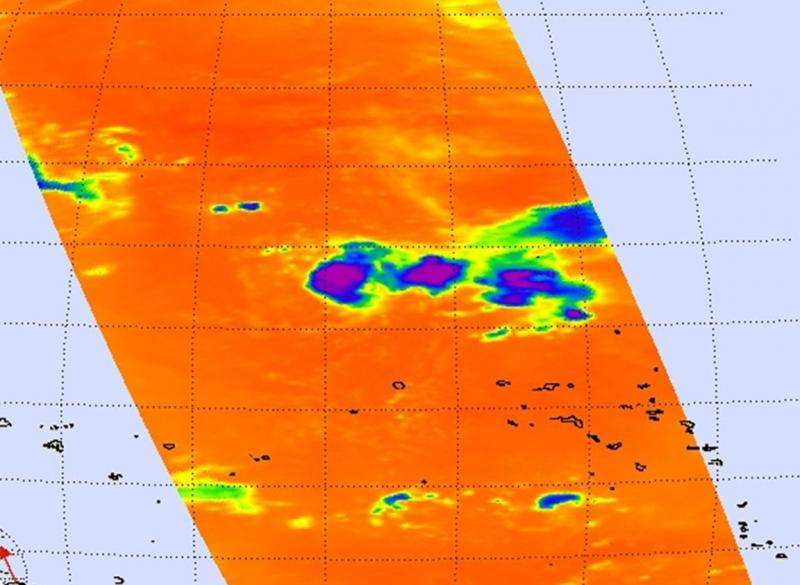NASA sees thunderstorms flaring up on Halola's eastern side

NASA infrared satellite imagery taken early on July 17 shows strong thunderstorms on the eastern side of Tropical Storm Halola.
NASA's Aqua satellite passed over Tropical Storm Halola on July 16 at 10:35 p.m. EDT and the Atmospheric Infrared Sounder (AIRS) instrument gathered infrared temperature data on the storm. AIRS showed the coldest cloud top temperatures at -63F/-53C, associated with the strongest thunderstorms, were all east of the center of circulation. That remained the case when another infrared instrument captured data on the storm later in the day and showed the same thing. Those strongest storms were concentrated on the eastern side of Halola's circulation.
On July 17 at 1500 UTC (11 a.m. EDT) Tropical Storm Halola had maximum sustained winds near 35 knots (40 mph/62 kph). Halola was centered near 18.1 North latitude and 157.6 East longitude, about 518 nautical miles north-northwest of Ujelang. It was moving to west-southwestward at 14 knots (16.1 mph/25.9 kph).
Halola is forecast to turn to the north-northwest and intensify over the next several days and reach typhoon status. The Joint Typhoon Warning Center track takes the storm very close to the island of Iwo To, Japan by July 21.
Provided by NASA's Goddard Space Flight Center




















